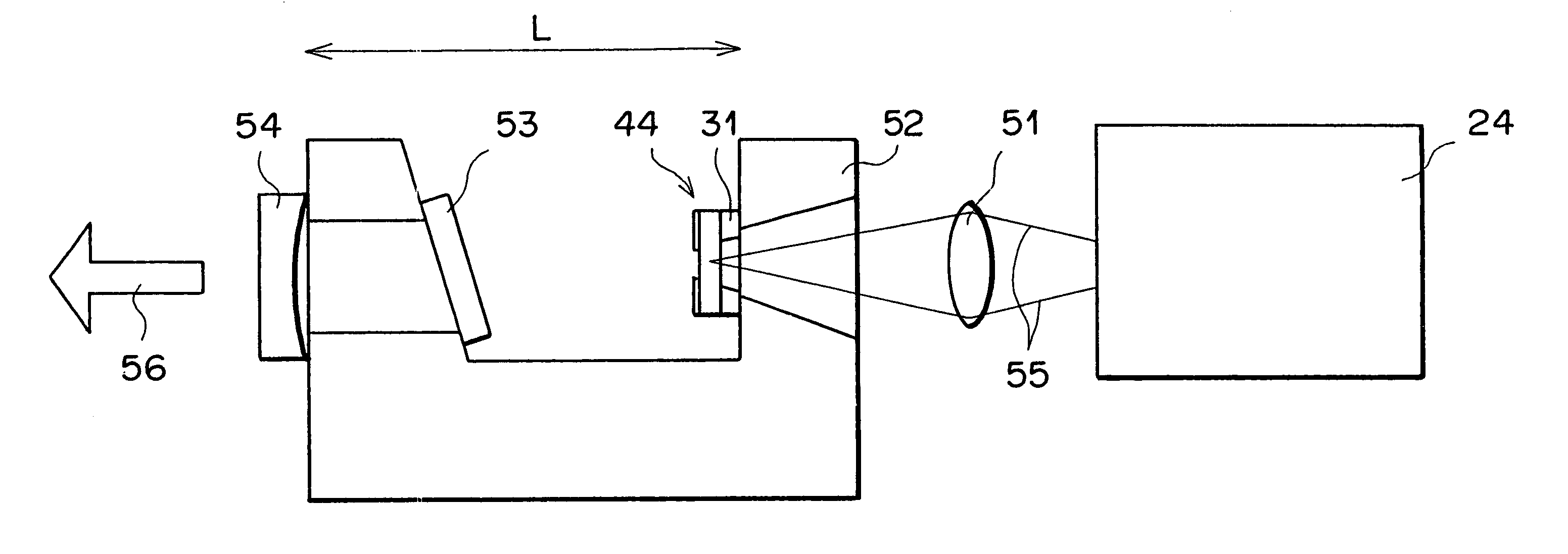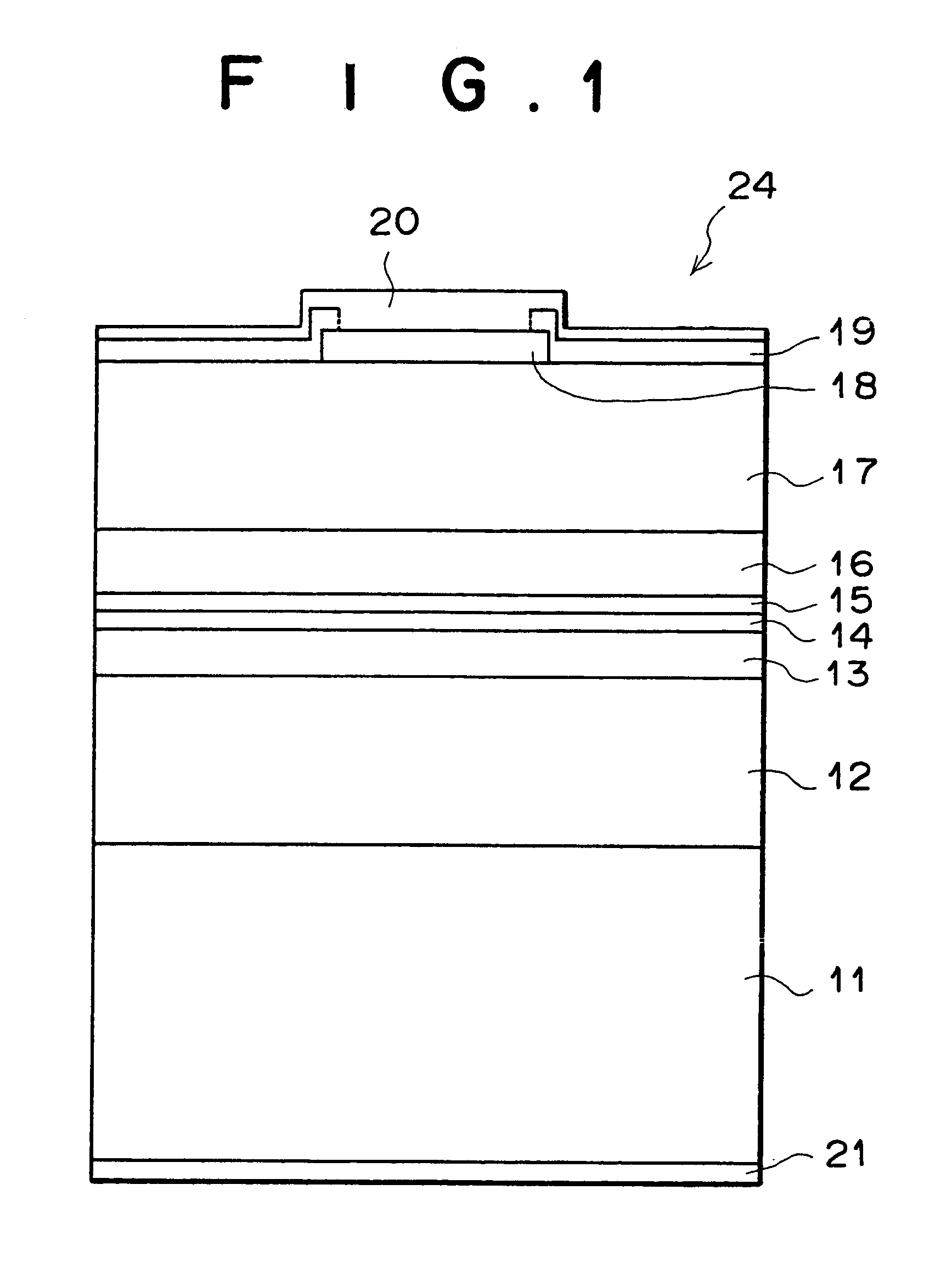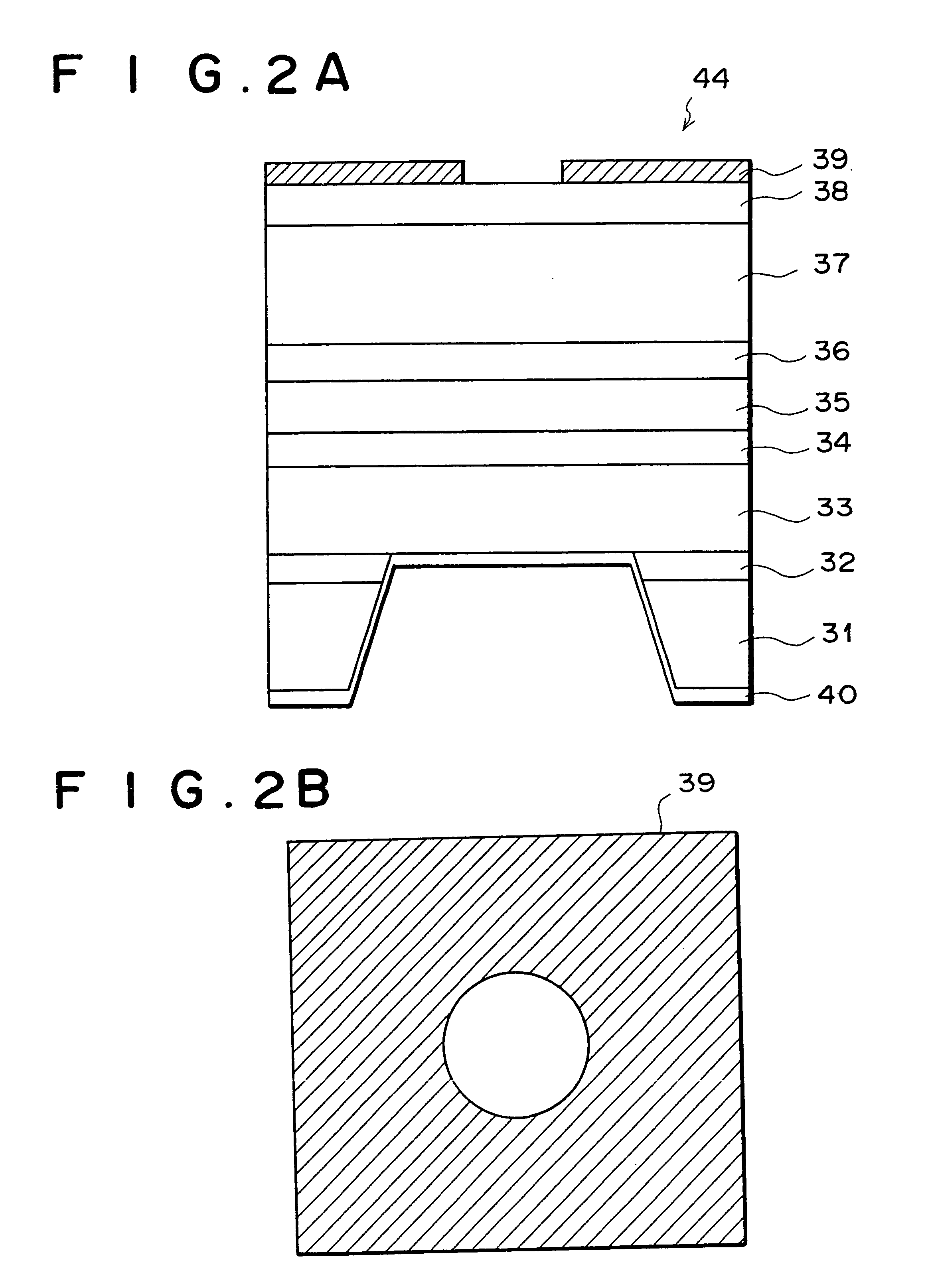Laser apparatus in which surface-emitting semiconductor is excited with semiconduct laser element and high-order oscillation modes are suppressed
a laser element and surface-emitting semiconductor technology, applied in the field of laser elements, can solve the problems of deteriorating laser beam quality, reducing carrier density, and limiting the use of laser beams
- Summary
- Abstract
- Description
- Claims
- Application Information
AI Technical Summary
Benefits of technology
Problems solved by technology
Method used
Image
Examples
first embodiment
The semiconductor laser element which emits laser light in the 810 nm band is used as an excitation light source in the first embodiment. FIG. 1 is a crosssectional view of the semiconductor laser. The semiconductor laser element used as the excitation light source in the first embodiment is produced as follows.
Initially, an n-type GaAs buffer layer 12, an n-type Al.sub.0.63 Ga.sub.0.37 As cladding layer 13, an n-type or i-type (intrinsic) InGaP optical waveguide layer 14, an InGaAsP single-quantum-well active layer 15, a p-type or i-type InGaP optical waveguide layer 16, a p-type Al.sub.0.63 Ga.sub.0.37 As cladding layer 17, a p-type GaAs cap layer 18 are formed on an n-type GaAs (001) substrate 11 by organometallic vapor phase epitaxy. Thereafter, areas of the p-type GaAs cap layer 18 other than a stripe area having a width of 100 .mu.m and corresponding to an oscillation stripe are removed by etching using an ammonia etchant, and then a SiO.sub.2 insulation film 19 is formed. Nex...
second embodiment
FIG. 4 is a crosssectional view of a surface-emitting semiconductor element which is used in the laser apparatus as the second embodiment of the present invention. The surface-emitting semiconductor element of FIG. 4 is excited with excitation laser light emitted from the semiconductor laser element 24 of FIG. 1, and oscillates at the wavelength of 980 nm. The surface-emitting semiconductor element used in the second embodiment is produced as follows.
Initially, a GaAs buffer layer 62, a Bragg reflection mirror 63, a GaAs optical confinement layer 64, and a GaAs / In.sub.0.2 Ga.sub.0.8 As multiple-quantum-well active layer 65 are formed on a GaAs (001) substrate 61 in the first process of organometallic vapor phase epitaxy. The Bragg reflection mirror 63 is comprised of twenty pairs of GaAs and Al.sub.0.7 Ga.sub.0.3 As layers, the GaAs layer in each pair has a thickness of .lambda. / 4n.sub.GaAs, the Al.sub.0.7 Ga.sub.0.3 As layer in each pair has a thickness of .lambda. / 4n.sub.Al0.7Ga0....
third embodiment
The semiconductor laser element which emits laser light in the 370 nm band is used as an excitation light source in the third embodiment. FIG. 6 is a crosssectional view of the semiconductor laser. The semiconductor laser element used as the excitation light source in the third embodiment is produced as follows.
Initially, an n-type GaN (0001) substrate 91 is formed in accordance with the method disclosed by Nakamura et al., "InGaN / GaN / AlGaN-Based Laser Diodes Grown on GaAs Substrate with a Fundamental Transverse Mode", Japanese Journal of Applied Physics Part 2 Letters, vol. 37, 1998, pp. L1020. Then, an n-type Ga.sub.1-z1 Al.sub.z1 N / GaN superlattice cladding layer 92 (0z2>0), a Ga.sub.1-z4 Al.sub.z4 N (doped with Si) / In.sub.x0 Ga.sub.1-x0 N multiple-quantum-well active layer 94 (z4>0, x0.gtoreq.0), a p-type Ga.sub.1-z3 Al.sub.z3 N carrier confinement layer 95 (0.35>z3>z2), a p-type or i-type Ga.sub.1-z2 Al.sub.z2 N optical waveguide layer 96, a p-type Ga.sub.1-z1 Al.sub.z1 N / GaN s...
PUM
 Login to View More
Login to View More Abstract
Description
Claims
Application Information
 Login to View More
Login to View More - R&D
- Intellectual Property
- Life Sciences
- Materials
- Tech Scout
- Unparalleled Data Quality
- Higher Quality Content
- 60% Fewer Hallucinations
Browse by: Latest US Patents, China's latest patents, Technical Efficacy Thesaurus, Application Domain, Technology Topic, Popular Technical Reports.
© 2025 PatSnap. All rights reserved.Legal|Privacy policy|Modern Slavery Act Transparency Statement|Sitemap|About US| Contact US: help@patsnap.com



